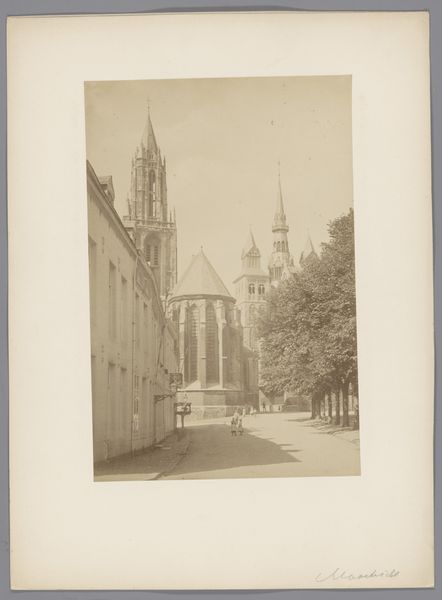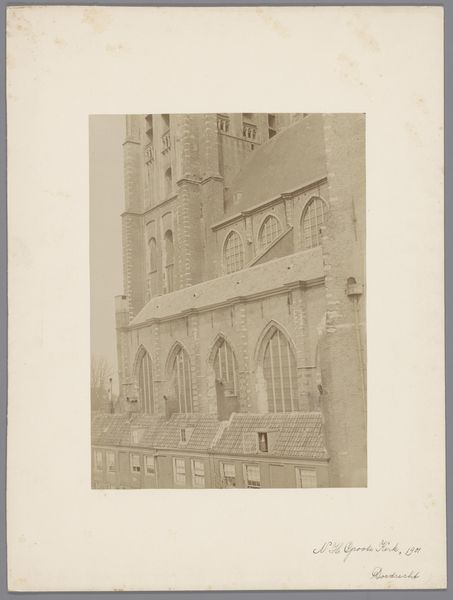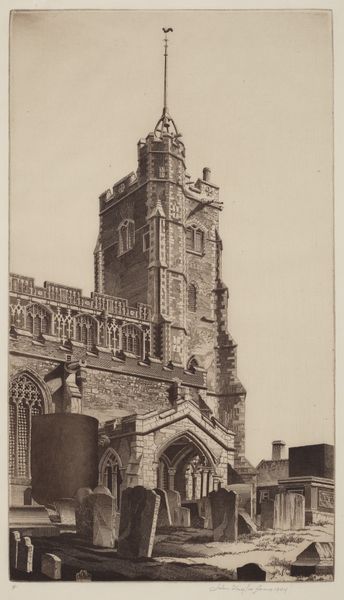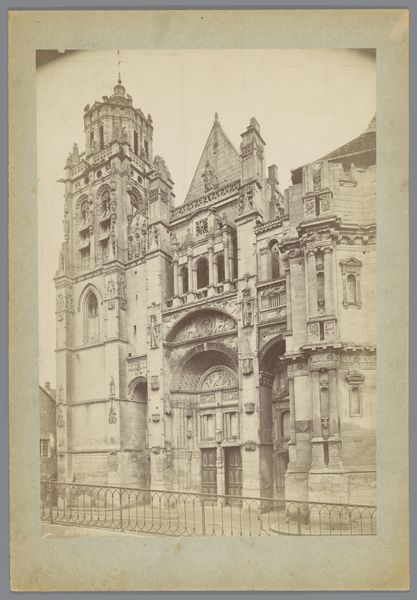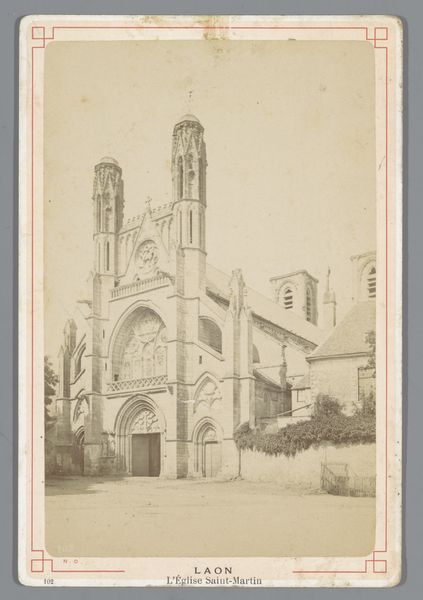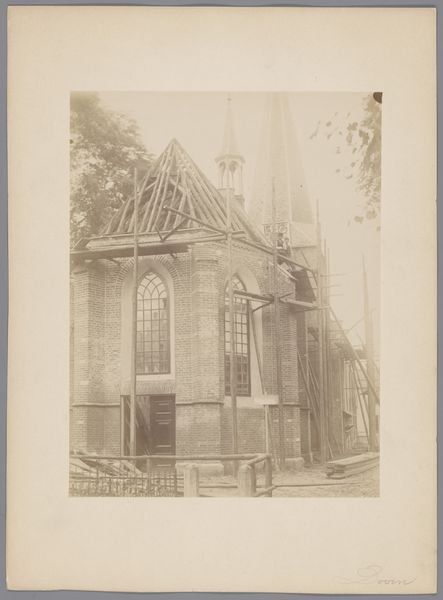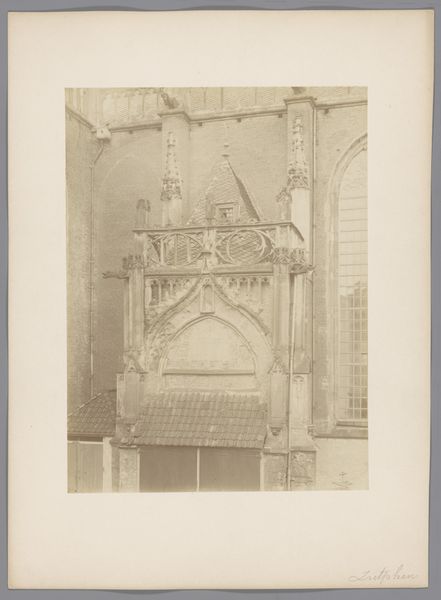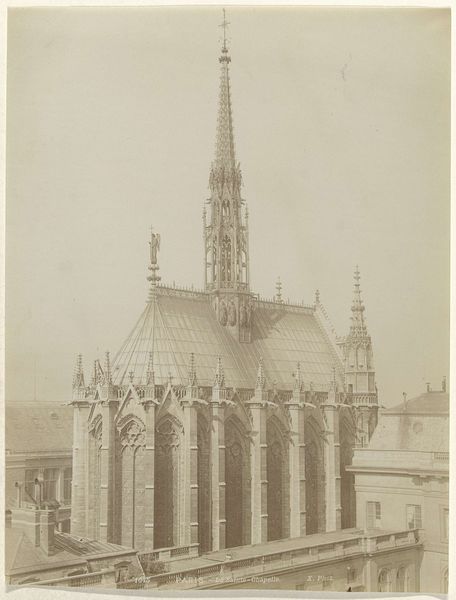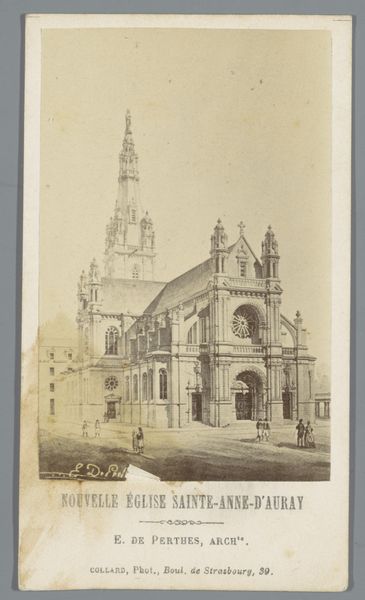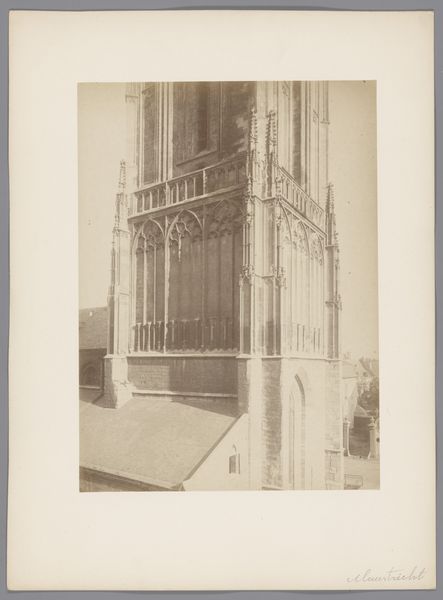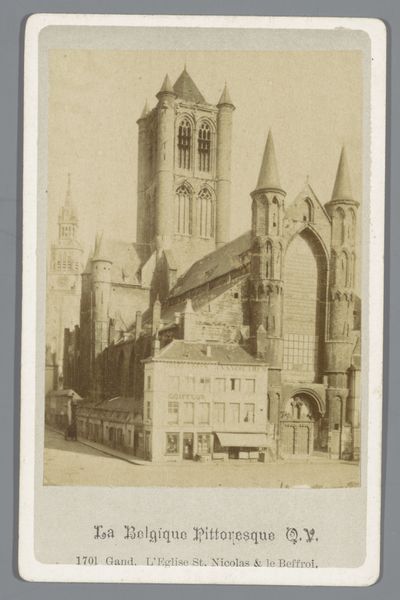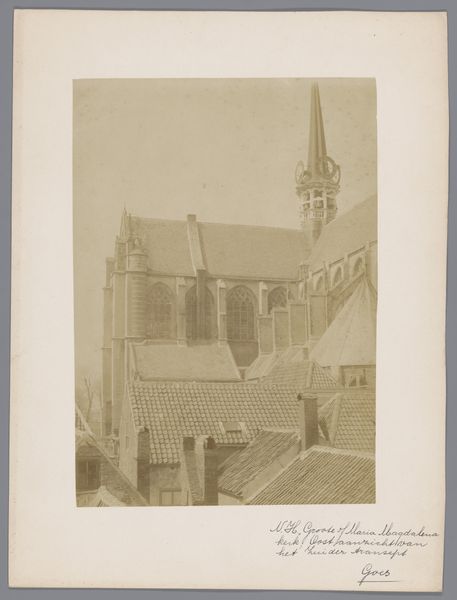
print, photography, site-specific, architecture
# print
#
landscape
#
photography
#
site-specific
#
architecture
#
building
Dimensions: height 322 mm, width 232 mm
Copyright: Rijks Museum: Open Domain
Editor: Here we have Médéric Mieusement’s photograph, "Deel van het dak van het kasteel van Chambord," dating from around 1875 to 1900. It's a sepia-toned image focusing on the castle’s rooftop architecture, giving off this powerful vibe of aristocratic dominance and old-world artistry. What do you make of it? Curator: The photograph, beyond its aesthetic appeal, speaks volumes about the power structures inherent in architectural photography of the era. This isn’t just a picture of a building; it’s a visual assertion of authority, capturing the grandiosity of Chambord, a castle deeply interwoven with French royal history. Consider, too, the perspective from which this photograph is taken. What is included, what is excluded, and what does this say about the artist’s agenda, perhaps inadvertently, to frame power? Editor: That's fascinating. I hadn't really thought about how the choices made in framing a building could communicate such strong messages about power. Curator: Indeed. Think about who would have had access to such a space, who was allowed to document it, and what stories were being told or, more significantly, not told about the labor that constructed and maintained it. Does this image reflect or resist those established hierarchies? Also, given the technological advances of photography at the time, how did this medium further democratize, or conversely, solidify the cultural status of sites like Chambord? Editor: So, looking at it now, the photograph feels less like a neutral record and more like a statement about cultural values and historical narratives, seen through a very specific lens. Curator: Precisely. This photograph of Chambord serves as a reminder to critically analyze the societal implications inherent in even seemingly straightforward architectural representations. It encourages us to examine whose stories are amplified and whose are systematically silenced. Editor: This makes me appreciate how photographs, especially older ones, can act as documents of ideology. Thanks! Curator: My pleasure! Remember, art is never truly neutral, and exploring those nuances is where the real understanding lies.
Comments
No comments
Be the first to comment and join the conversation on the ultimate creative platform.
